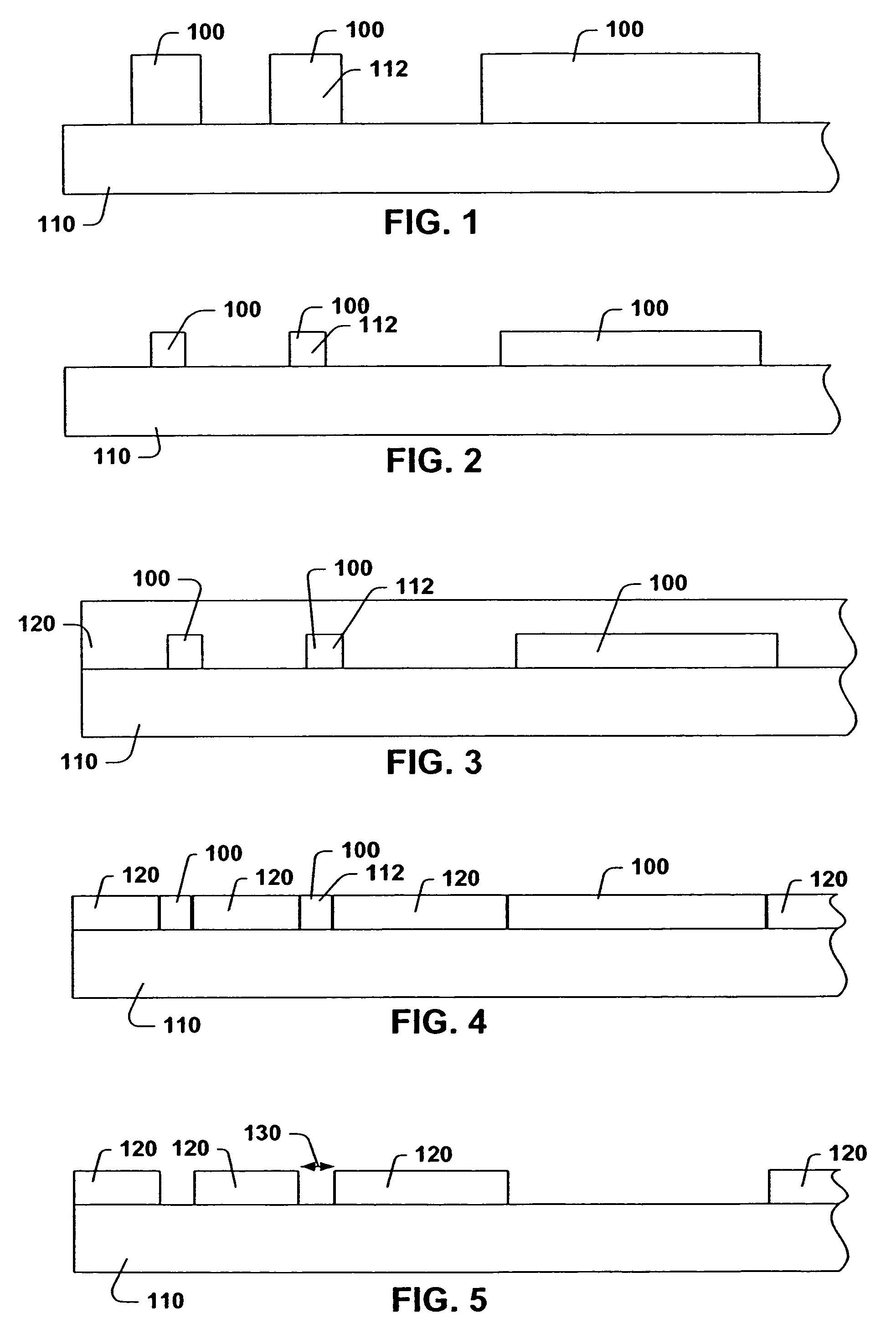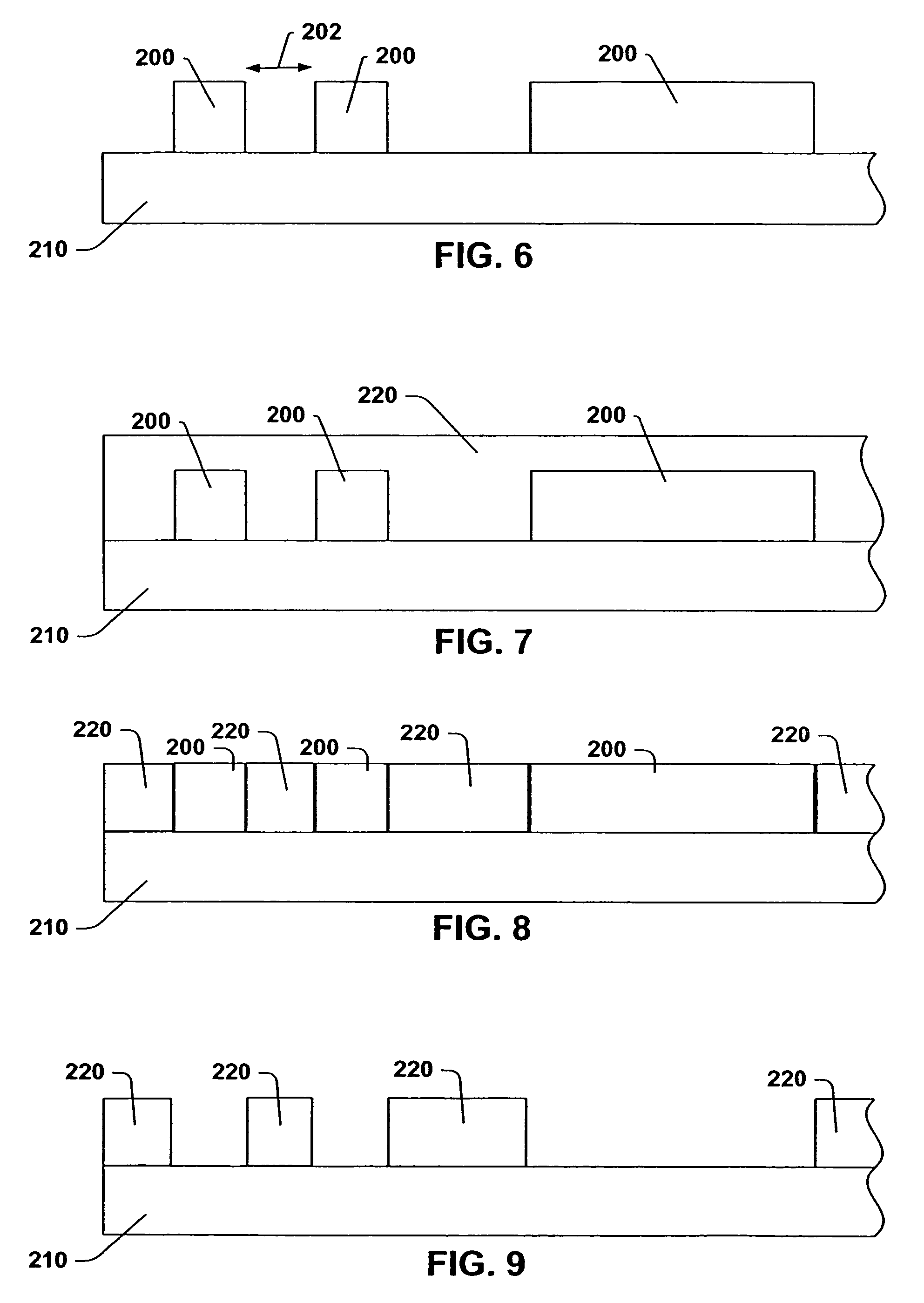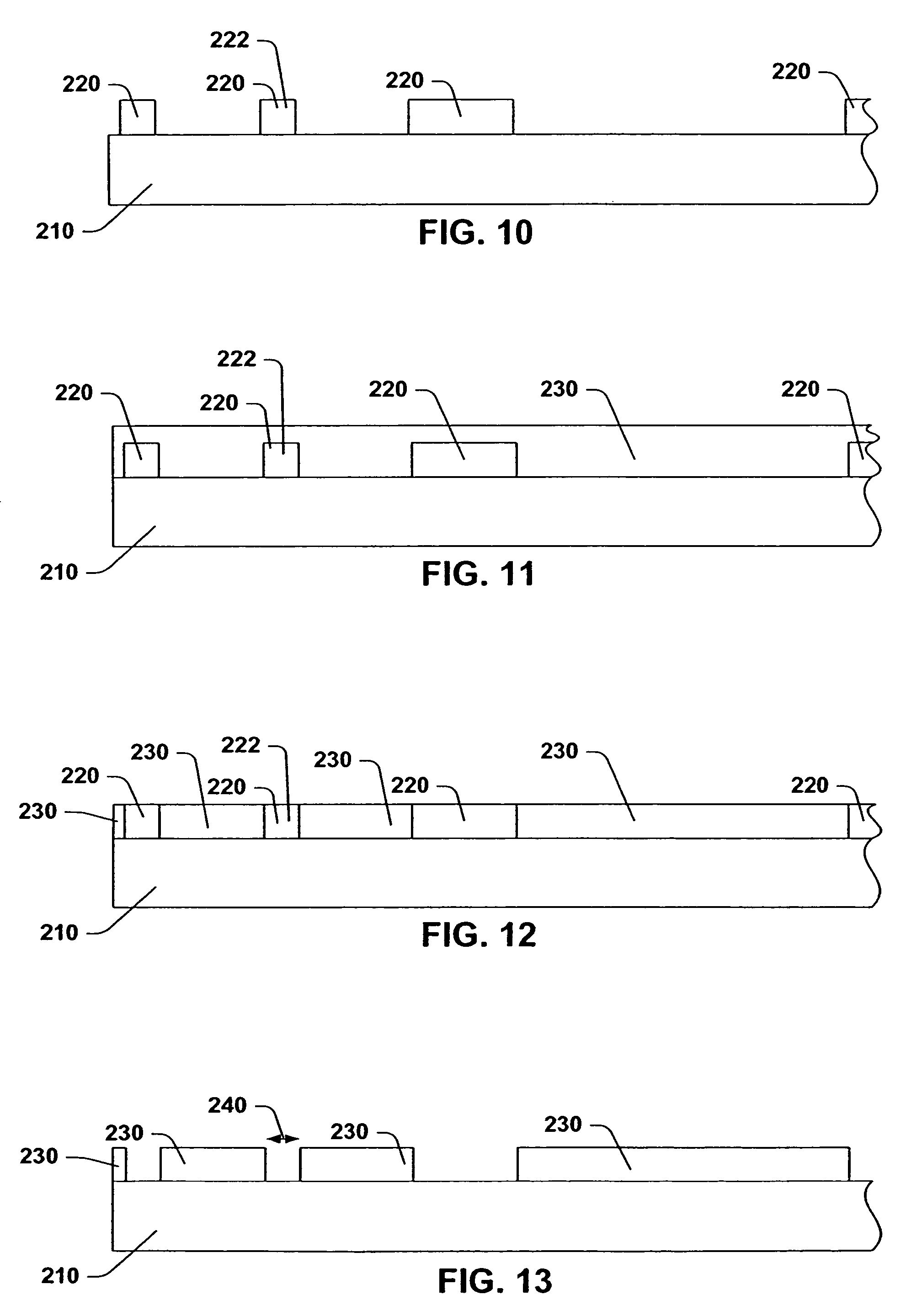Inverse resist coating process
a technology of resist coating and inverse resist, which is applied in the field of lithographic, can solve the problems of limiting the minimum feature size of lithographic processes and the unsatisfactory need for a process that overcomes feature size limitations, and achieves the effects of reducing feature size, sublithographic features, and reducing feature siz
- Summary
- Abstract
- Description
- Claims
- Application Information
AI Technical Summary
Benefits of technology
Problems solved by technology
Method used
Image
Examples
example i
[0054]A process according to one aspect of the invention including an optional trim step is illustrated in FIGS. 1 to 5. FIG. 1 illustrates substrate 110 with patterned first coating 100. In this example, patterned first coating 100 is a positive tone resist that has an aqueous alkali developer. For example, patterned first coating 100 can be a novolac or TOBC. Patterned first coating 100 is formed by coating substrate 110 with a resist solution, prebaking the resist, irradiating the resist through a mask, and developing the resist with an aqueous alkali developer.
[0055]FIG. 2 illustrates patterned first coating 100 after trimming. In this example, trimming is carried out with plasma or reactive ion etching using oxygen and optionally an inert gas. Trimming thins and narrows the features of patterned coating 100 to about half their original size. For example, the width of feature 112, which is a line, is narrowed from a width of about 0.5 μm to a width of about 0.25 μm.
[0056]Prior t...
example ii
[0060]This example uses the procedures of Example I, except for the following: The first coating is positive tone resist having a non-polar organic solvent developer, PMMA or POS for example. The patterned first coating is not irradiated with actinic radiation until after the planarization step. After irradiation, the second coating is removed with a xylene developer.
[0061]In this example, an alternative for the second coating material is a positive tone photoresist, such as a novolac or TOBC. If TOBC is the second coating material, it is irradiated with actinic radiation prior to removal of the patterned first coating.
example iii
[0062]A process according to another aspect of the invention is illustrated in FIGS. 6 to 9. FIG. 6 shows a patterned first coating 200 formed on substrate 210. Patterned first coating 200 is also a positive tone resist that has an aqueous alkali developer, for example, a novolac or TOBC. Patterned first coating 200 is formed by coating substrate 210 with a resist solution, prebaking the resist, irradiating the resist through a mask, and developing the resist with an aqueous alkali developer.
[0063]Prior to application of the second coating, patterned first coating 200 is irradiated with actinic radiation rendering it soluble in aqueous base. In the case where patterned first coating 200 is TOBC, irradiation renders the coating insoluble in non-polar organic solvent.
[0064]FIG. 7 illustrates second coating material 220 covering the exposed portions of substrate 210 and patterned first coating 200. In this example, second coating 220 is another positive tone resist. Second coating 220 ...
PUM
| Property | Measurement | Unit |
|---|---|---|
| temperature | aaaaa | aaaaa |
| feature sizes | aaaaa | aaaaa |
| feature sizes | aaaaa | aaaaa |
Abstract
Description
Claims
Application Information
 Login to View More
Login to View More - R&D
- Intellectual Property
- Life Sciences
- Materials
- Tech Scout
- Unparalleled Data Quality
- Higher Quality Content
- 60% Fewer Hallucinations
Browse by: Latest US Patents, China's latest patents, Technical Efficacy Thesaurus, Application Domain, Technology Topic, Popular Technical Reports.
© 2025 PatSnap. All rights reserved.Legal|Privacy policy|Modern Slavery Act Transparency Statement|Sitemap|About US| Contact US: help@patsnap.com



